As the landscape dons its vibrant autumnal hues and the air grows crisp with anticipation, there emerges a unique allure to immerse oneself in nature’s embrace. Fall camping offers an unmatched blend of serenity, beauty, and adventure. It’s a time when the forests paint a masterpiece of reds, oranges, and golds, and the campfires seem to burn a little brighter against the cool backdrop. This guide will take you on a journey through the magical realm of autumn camping, ensuring you’re well-equipped, both in gear and gourmet delights, to make the most of this enchanting season. Dive in and discover the wonders that await.
Part I: The Magic of Fall Camping
- The Unique Charm of Autumn
The allure of autumn is undeniable. As summer fades, nature undergoes a profound metamorphosis. The once green canopies gradually shift to a spectrum of fiery reds, warm oranges, and golden yellows. This colourful tapestry, set against the deep blue of the sky, creates a visual feast for the eyes of every camper.
But it’s not just the visual spectacle that captivates. The ambiance of a fall forest is distinctly different. There’s a gentle hush that blankets the woods, punctuated by the soft rustling of leaves underfoot and the distant calls of migrating birds. The air is cooler, fresher, carrying with it the earthy scent of decaying leaves and the promise of winter.
Camping during this time offers an intimate connection with this fleeting moment in nature’s cycle. The days, though shorter, are filled with invigorating hikes and explorations, while nights offer the cozy comfort of campfires, their warmth and light amplified by the chill of the season.
In essence, fall camping is a sensory experience, an immersion into nature’s grand display of change and renewal. It’s an invitation to slow down, to marvel, and to appreciate the transient beauty that defines this special time of year.
- Best Regions for Fall Foliage
Every year, nature enthusiasts and photographers alike embark on pilgrimages to witness the grandeur of autumn’s display. While many places experience the shift from summer to winter, there are a few regions that have become iconic for their breath taking fall foliage.
New England, USA: Often touted as the quintessential fall destination, New England’s diverse tree species contribute to its fiery palette. From the rugged coasts of Maine to the rolling hills of Vermont, this region offers a myriad of scenic drives, hiking trails, and picturesque towns draped in autumn colours.
Quebec, Canada: Particularly the Laurentian Mountains, where sugar maples turn a vibrant shade of red. Coupled with serene lakes and charming villages, it’s a tranquil retreat from the hustle and bustle.
The Japanese Alps: Japan might be renowned for its spring cherry blossoms, but its autumn display is equally enchanting. The contrast of red Japanese maple leaves against historic temples and mountain backdrops is truly a sight to behold.
The Scottish Highlands: While perhaps more subtle than other regions, the vast moors and rugged landscapes of the Highlands take on a warm, golden tone, offering a raw and dramatic backdrop for campers and hikers.
Timing is crucial when planning a trip to these regions. It’s essential to monitor local forecasts and foliage reports to ensure you catch the leaves at their peak. Remember, the window for peak foliage can be brief, but with a bit of planning, the reward is an unforgettable visual spectacle.
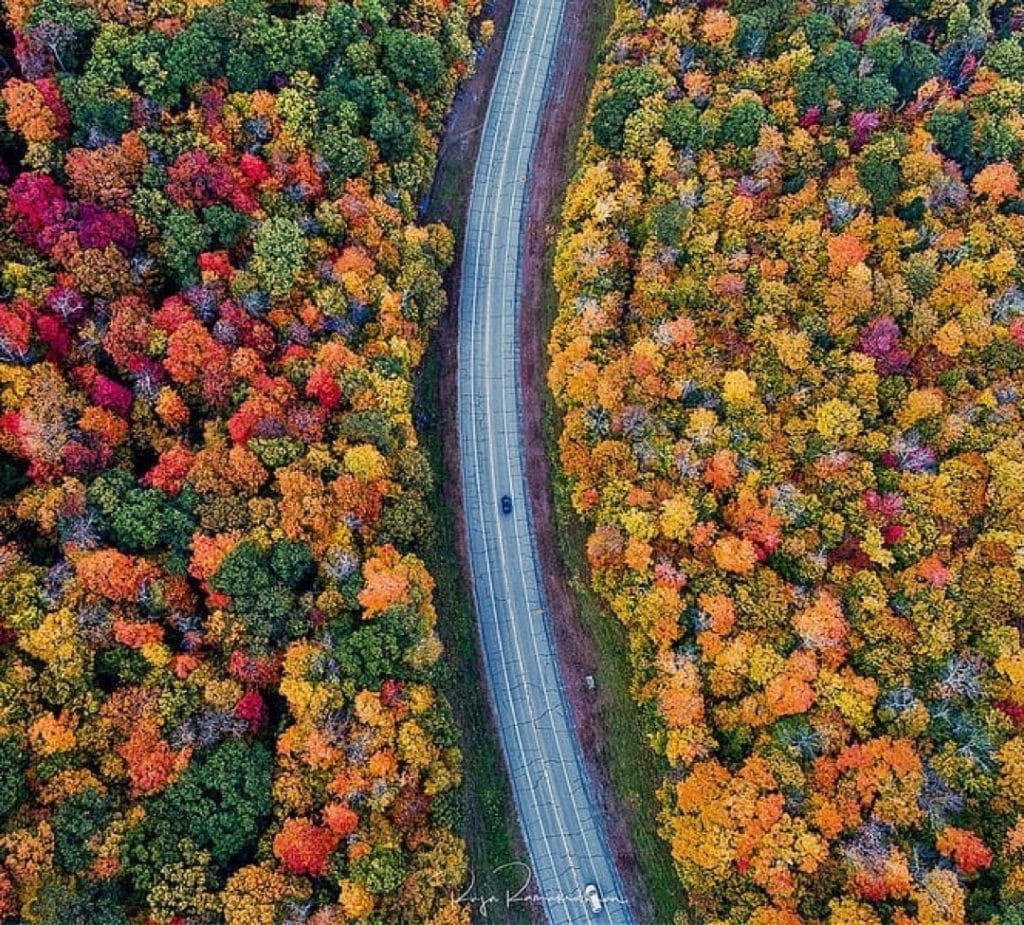
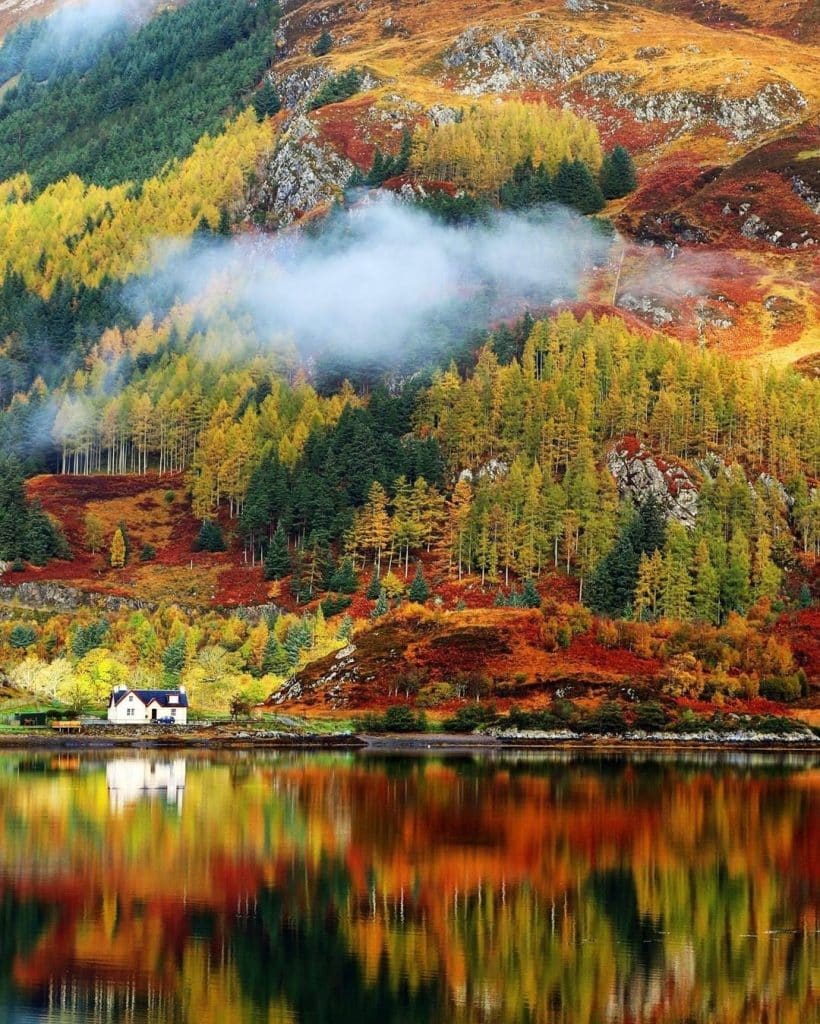
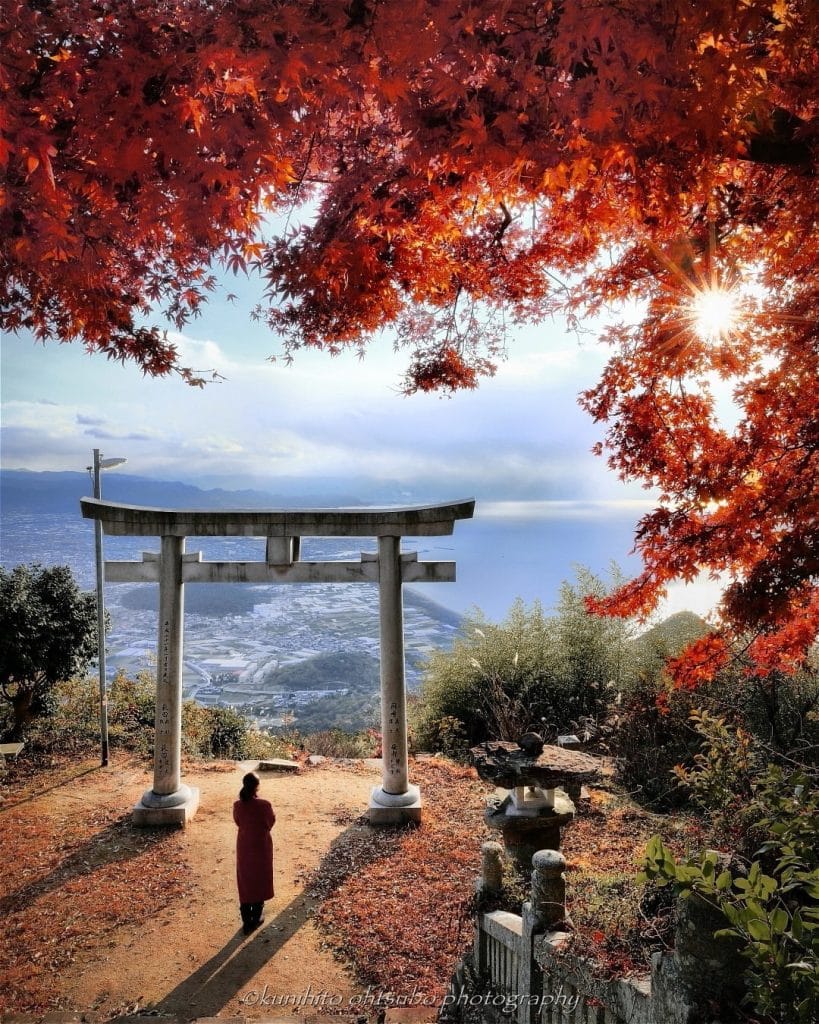
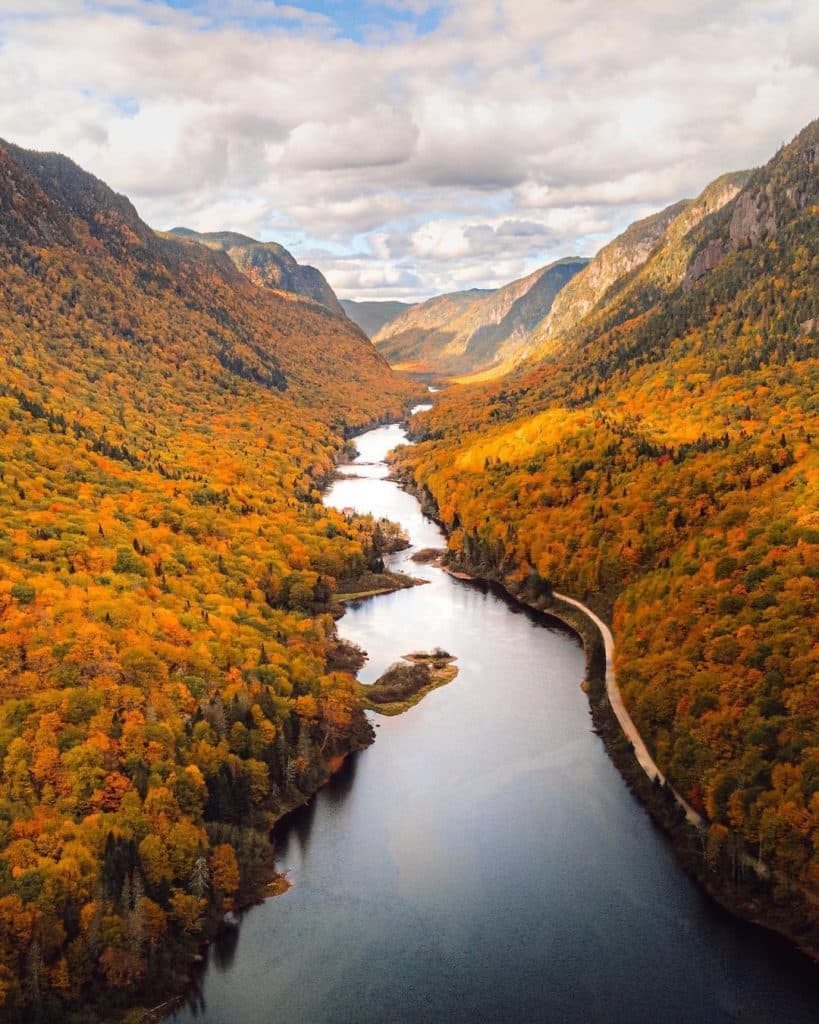
Great Camera Options
- Budget Option: Canon EOS Rebel T7 with 18-55mm Kit Lens
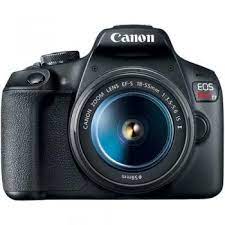
Camera: The Canon EOS Rebel T7 (also known as the 2000D in some regions) is an entry-level DSLR that offers a solid performance for its price. It comes with a 24.1MP APS-C CMOS sensor, which provides good detail and colour reproduction for landscape shots.
Lens: The 18-55mm kit lens is versatile enough for various shooting scenarios. While it might not offer the sharpest image compared to higher-end lenses, it’s sufficient for hobbyists and those starting in photography.
Expect to pay about: $500 Canadian
- Mid-range Option: Sony Alpha a6400 with Sony E 16-70mm f/4 ZA OSS Lens

Camera: The Sony Alpha a6400 is a mirrorless camera that boasts a 24.2MP APS-C sensor. It has impressive autofocus capabilities and offers excellent image quality in its category.
Lens: The Sony E 16-70mm f/4 ZA OSS is a high-quality zoom lens with a versatile focal length suitable for landscapes. It offers a constant f/4 aperture and Optical SteadyShot (OSS) for stabilised shots.
Expect to pay about: $1,750 Canadian
- High-end Option: Nikon D850 with Nikon AF-S NIKKOR 24-70mm f/2.8E ED VR Lens
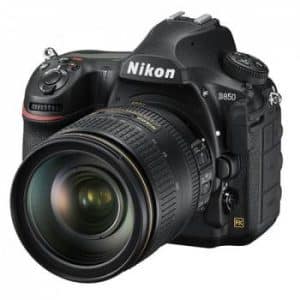
Camera: The Nikon D850 is a full-frame DSLR revered for its incredible 45.7MP sensor, delivering stunning image quality, high resolution, and superb dynamic range. This camera is a favourite among professionals, especially for landscape photography.
Lens: The Nikon AF-S NIKKOR 24-70mm f/2.8E ED VR is a professional-grade lens known for its sharpness, versatility, and durability. The f/2.8 aperture ensures great performance even in low light, and the VR (Vibration Reduction) system provides stabilisation for sharper images.
Expect to pay about: $3,900 Canadian
Part II: Gearing Up for Fall
- The Importance of Layering
As the temperatures drop and the autumn winds begin to whisper, staying warm and dry becomes paramount for outdoor enthusiasts. While the instinct might be to throw on the thickest sweater you own, the seasoned camper knows the secret lies in layering.
Basics of Layering: At its core, layering is about managing moisture, insulating from the cold, and shielding against wind or rain. By wearing multiple layers, you can easily adjust to changing conditions by adding or removing pieces.
Base Layer (Moisture Management):
- Purpose: This layer sits closest to your skin and has the primary job of wicking away sweat. By keeping your skin dry, you avoid the chilling effect of evaporative cooling.
- Materials: Synthetic fabrics like polyester or natural ones like merino wool are excellent choices. Avoid cotton as it retains moisture.
- Examples: Lightweight long-sleeve shirts, long underwear.
Middle Layer (Insulation):
- Purpose: This layer’s role is to trap air and retain body heat. It acts as a buffer between the warmth generated by your body and the cold outside air.
- Materials: Fleece, down, and synthetic insulating materials are popular choices.
- Examples: Fleece jackets, down vests or synthetic insulation jackets.
Outer Layer (Protection from Elements):
- Purpose: Often referred to as the “shell layer,” this layer protects you from wind, rain, and snow. It’s not primarily for insulation but to keep external elements at bay.
- Materials: Look for materials that are both waterproof and breathable. Gore-Tex is a well-known material in this category.
- Examples: Waterproof jackets, rain pants, windbreakers.
Benefits of Layering:
- Versatility: As you hike, the body generates heat, and you might feel too warm. Shed a layer. When you stop for a break and cool down, you can put it back on.
- Dryness: By wicking sweat away, you remain dry, which is crucial for staying warm in cooler temperatures.
- Warmth: By trapping air and heat through multiple layers, you create a more effective insulation system than one thick layer could provide.
In the unpredictable climate of fall, where a sunny morning can quickly turn into a chilly afternoon, mastering the art of layering is your best defence against the elements. As you prepare for your fall camping adventure, consider each layer as a vital component of your outdoor wardrobe, ensuring comfort and warmth regardless of Mother Nature’s mood swings.
- Base Layer: Smartwool Merino 250 Base Layer Crew
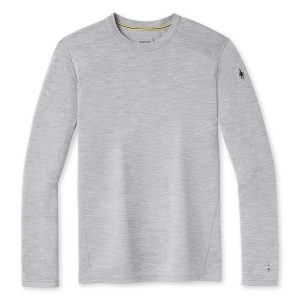
- Description: Made from 100% Merino wool, this base layer is designed for colder conditions. Merino wool is renowned for its natural wicking abilities, odour resistance, and incredible comfort against the skin. This particular base layer is a staple among many outdoor enthusiasts due to its warmth and durability.
- Features:
- Interlock knit construction
- Crew neck with set-in sleeves
- Shoulder panels eliminate top shoulder seams, reducing chafing
- Slim Fit
- Middle Layer: Patagonia Nano Puff Jacket
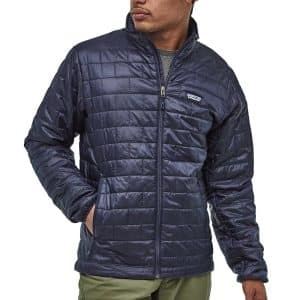
- Description: The Nano Puff Jacket uses synthetic PrimaLoft Gold Insulation Eco, which is lightweight, compressible, and offers a superb warmth-to-weight ratio. Moreover, it retains 98% of its warmth even when wet, making it an excellent choice for unpredictable fall weather.
- Features:
- 100% recycled polyester shell and lining
- Durable water repellent (DWR) finish
- Zippered hand warmer pockets; internal chest pocket doubles as a stuff sack
- Brick quilting pattern stabilises insulation
- Outer Layer: Arc’teryx Beta AR Jacket
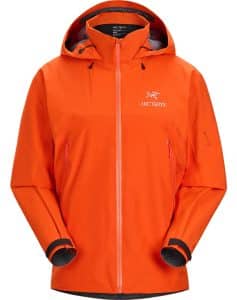
- Description: A versatile waterproof and breathable jacket, the Beta AR is designed for varied conditions. Made with GORE-TEX Pro fabric, it provides durable protection against rain, wind, and snow. It’s a favourite among many outdoor professionals and enthusiasts.
- Features:
- Durable, lightweight N40r-X 3L GORE-TEX Pro
- Helmet-compatible DropHood™
- WaterTight™ external zippers
- Two hand pockets, one internal pocket, and one external chest pocket
2. Essential Fall Camping Gear
While the allure of autumn’s beauty beckons many to the great outdoors, it’s vital to be adequately equipped to handle the cooler, and often unpredictable, weather conditions. Beyond clothing, there’s a range of gear specifically designed for fall camping to ensure comfort, warmth, and safety.
Sleeping Gear:
- Sleeping Bag: Opt for a sleeping bag rated at least 10°F colder than the lowest temperature you expect to encounter. For fall camping, a 3-season sleeping bag is usually adequate. Consider features like a draft collar and hood for added warmth.
- Product Recommendation: The North Face Cat’s Meow Sleeping Bag.
- Sleeping Pad: A sleeping pad not only provides comfort but also insulation from the cold ground. Look for pads with a higher R-value for better insulation.
- Product Recommendation: Therm-a-Rest NeoAir XTherm Sleeping Pad.
Shelter:
- Tent: A 3-season tent with a sturdy rainfly and good ventilation is crucial. Ensure it’s made from durable materials to withstand wind and occasional early frost.
- Product Recommendation: REI Co-op Half Dome 2 Plus Tent.
Campsite Essentials:
- Tarp: An additional ground tarp under your tent can protect against moisture and add an extra insulation layer. Tarps are also great for creating a sheltered cooking or sitting area.
- Portable Heater: Compact and safe campsite heaters can make a significant difference on chilly nights. Always ensure proper ventilation and follow safety guidelines.
- Product Recommendation: Mr. Heater Little Buddy Propane Heater.
- Headlamp: Days are shorter in the fall, and a reliable headlamp is indispensable for setting up camp, cooking, or night-time excursions. Opt for one with variable settings and a longer battery life.
- Product Recommendation: Black Diamond Spot 350 Headlamp.
Safety Equipment:
- Emergency Thermal Blankets: Lightweight and compact, these can be lifesavers in unexpected cold snaps.
- Fire Starters: Waterproof matches or a wind-resistant lighter can help you get a fire going even in damp conditions.
- First Aid Kit: Always have a well-stocked kit tailored for camping. Include items for treating hypothermia or frostbite.
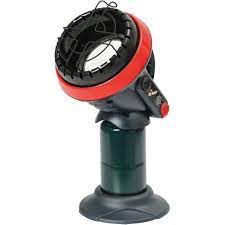
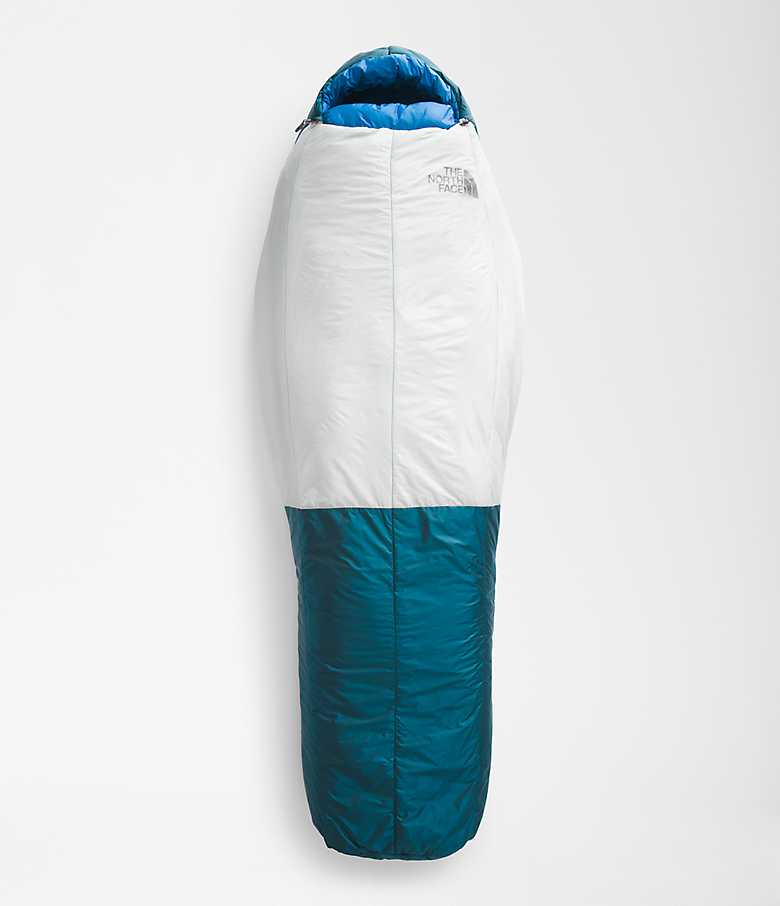
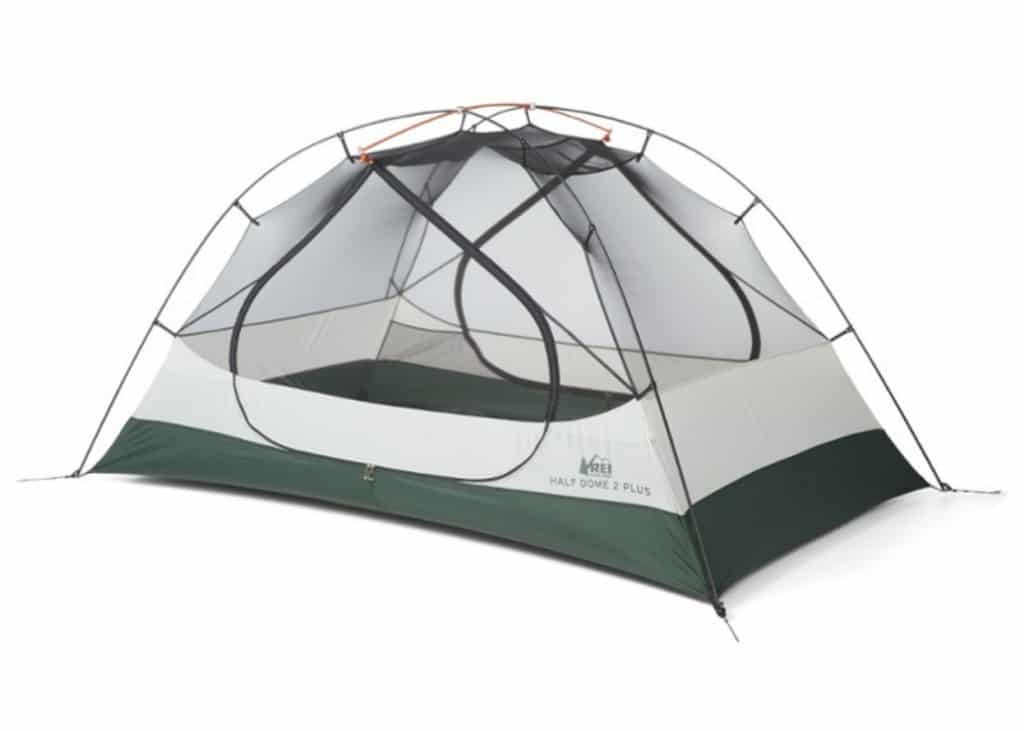
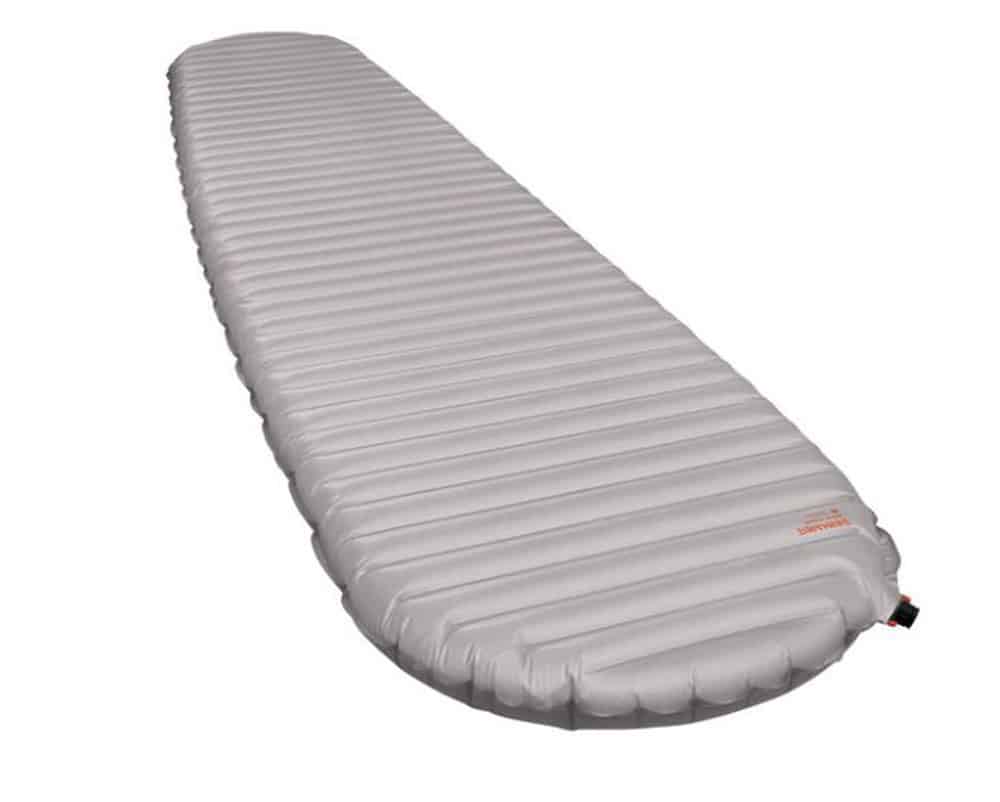
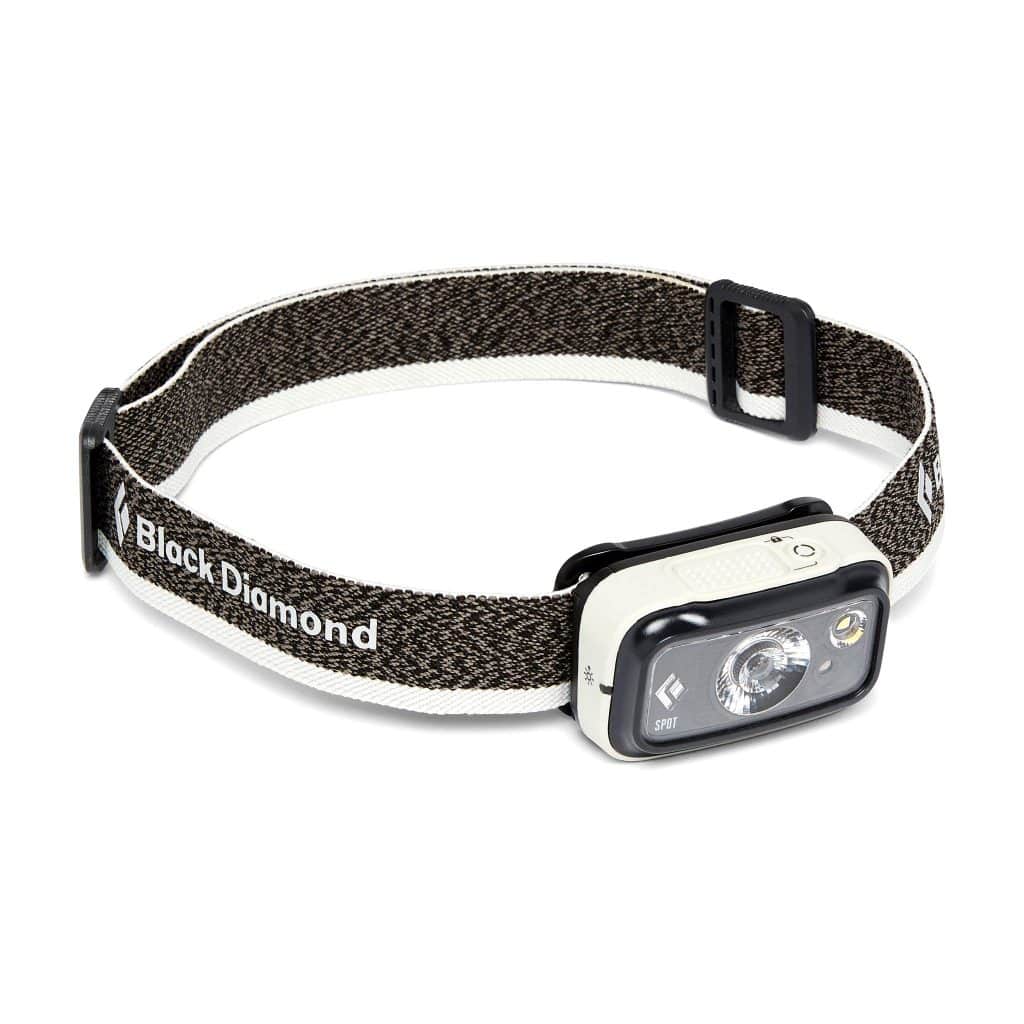
Autumn’s unpredictable nature means preparation is key. While the cooler temperatures and beautiful landscapes are enticing, they come with their challenges. By ensuring you’re well-equipped with the right gear, you can enjoy the splendours of fall camping while staying warm, dry, and safe.
Part III: Fall Camping Gourmet
- Campfire Cooking Techniques
The campfire: a source of warmth, light, and most delightfully, food. Fall camping presents the perfect opportunity to indulge in hearty meals that not only satiate hunger but also warm the soul. However, mastering the art of campfire cooking requires understanding some fundamental techniques.
Choosing the Right Campfire Setup:
- Trench Fire: Ideal for windy conditions, this setup involves digging a small trench in the ground where the fire is lit. It offers protection and channels the heat in one direction, making it perfect for roasting and grilling.
- Log Cabin Fire: By stacking logs in a square formation and filling the centre with tinder and kindling, this setup provides a stable, long-lasting heat. Great for slow-cooked stews or soups.
Cooking Methods:
- Direct Grilling: Just like a BBQ, food is placed directly over the flames. This method cooks food quickly and is perfect for steaks, fish, and vegetables.
- Pan-frying: Using a cast-iron skillet or pan, this method is suitable for foods that need even heat, like pancakes or sautéed vegetables.
- Dutch Oven Cooking: A Dutch oven is a heavy-duty pot that can be placed directly into the fire or have coals placed on its lid. It’s perfect for making soups, stews, and even baking bread or desserts.
Managing Heat:
- Hardwoods vs. Softwoods: Hardwoods like oak or maple burn longer and provide consistent heat, making them preferable for cooking. Softwoods like pine or fir can burn unpredictably and may impart a resinous taste to food.
- Controlling Temperature: A campfire doesn’t have dials like your stove. To adjust heat, move food closer or further from the flames, or spread out and manage your coals.
Safety and Clean-up:
- Always have a bucket of water or a fire extinguisher nearby.
- Use long tongs or campfire gloves to handle hot pots or adjust logs.
- Once done cooking, ensure the fire is completely extinguished. Leave no trace: clean up any food scraps and pack out all trash.
Part III: Fall Camping Gourmet Recipes
- Fall-inspired Recipes
The crisp air and vibrant foliage of fall are bound to ignite one’s appetite. Harnessing the flavours of the season, these fall-inspired recipes are perfect for warming up and refuelling after a day of outdoor adventure.
Breakfast: Pumpkin-spiced Oatmeal
- Ingredients: Rolled oats, canned pumpkin puree, milk (or almond milk), brown sugar, pumpkin spice mix, chopped nuts (optional), and dried cranberries.
- Method: In a pot over the campfire, combine the oats, milk, pumpkin puree, and a dash of pumpkin spice. Cook until the oats are soft. Serve with a sprinkle of brown sugar, nuts, and dried cranberries.
Lunch: Hearty Vegetable Stew
- Ingredients: Diced carrots, potatoes, onions, bell peppers, canned diced tomatoes, vegetable broth, garlic, salt, pepper, and any other preferred vegetables.
- Method: In a Dutch oven over the campfire, sauté onions and garlic until translucent. Add the rest of the vegetables, canned tomatoes, and broth. Simmer until all the vegetables are tender. Season with salt and pepper to taste.
Dinner: Campfire Roasted Chicken with Root Vegetables
- Ingredients: Chicken pieces (thighs, drumsticks), diced root vegetables (potatoes, carrots, turnips), olive oil, rosemary, garlic powder, salt, and pepper.
- Method: Toss chicken and vegetables in olive oil, rosemary, garlic powder, salt, and pepper. Wrap individual portions in heavy-duty aluminium foil, creating a tight packet. Place packets on hot coals for about 25-30 minutes, turning once.
Beverages: Hot Apple Cider
- Ingredients: Fresh apple cider, cinnamon sticks, whole cloves, star anise, and a slice of orange.
- Method: In a pot over the campfire, combine apple cider with the spices and orange slice. Bring to a gentle simmer, allowing the spices to infuse. Serve hot.
Dessert: S’mores with a Twist
- Ingredients: Graham crackers, marshmallows, chocolate bars, and peanut butter or caramel spread.
- Method: Roast a marshmallow over the campfire. On a graham cracker, spread a layer of peanut butter or caramel, place a piece of chocolate, and then the roasted marshmallow. Top with another graham cracker and enjoy.
Final Thoughts
Autumn, with its palette of warm hues and crisp air, offers a unique and intimate embrace with nature. While the season invites us into its mesmerizing beauty, it also presents its own set of challenges. This guide was crafted to ensure that every fall camper, from the novice to the seasoned adventurer, is equipped to fully immerse in the magic of the season while staying comfortable, safe, and well-fed.
From understanding the nuanced dance of layering to mastering the art of campfire cuisine, fall camping is as much about preparation as it is about savoring the fleeting moments of serenity and splendor. As the leaves rustle underfoot and the campfire stories come to life, remember that the essence of camping is not just about where you are, but how you experience it.
So gear up, venture out, and let the enchanting tapestry of autumn become the backdrop to memories that will last a lifetime. Happy camping!

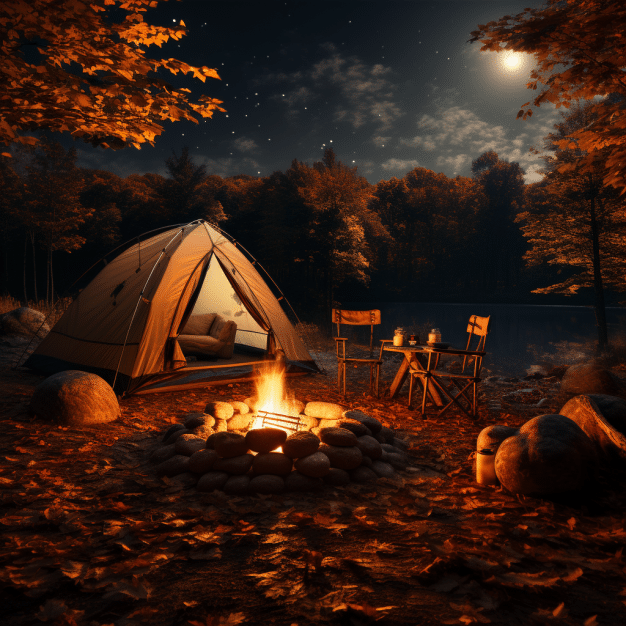




Leave a Reply